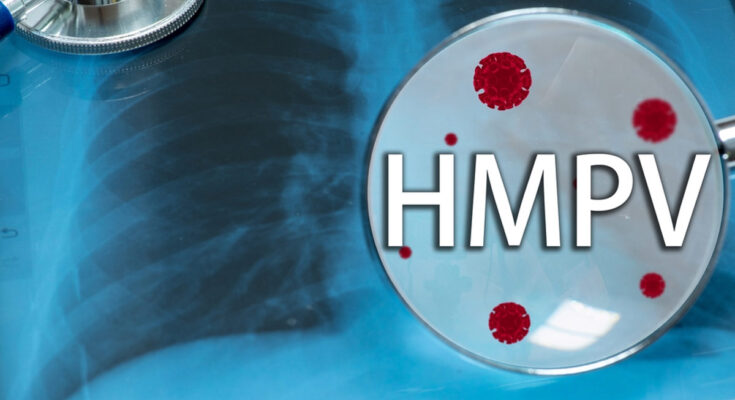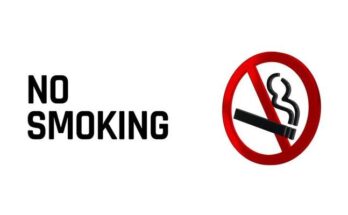HMPV Treatment: Human Metapneumovirus (HMPV) is a respiratory virus that commonly affects individuals of all ages but is especially severe in young children, the elderly, and immunocompromised individuals. It belongs to the Paramyxoviridae family, which also includes respiratory syncytial virus (RSV) and parainfluenza viruses.
First identified in 2001 in the Netherlands, HMPV has since been recognized as one of the leading causes of respiratory tract infections worldwide. Although the virus has likely been circulating for decades, advancements in molecular diagnostics enabled its formal discovery.
HMPV is associated with upper and lower respiratory tract illnesses, ranging from mild cold-like symptoms to severe pneumonia and bronchiolitis. Understanding this virus is crucial, given its impact on public health and the burden it places on healthcare systems during outbreaks.
Epidemiology and Transmission of HMPV
Prevalence Around the World
HMPV infections occur globally and are responsible for a significant number of respiratory illnesses each year. Studies have shown that nearly all children are exposed to HMPV by the age of 5. However, reinfections can occur throughout life, especially in adults with weakened immune systems.
Modes of Transmission
HMPV spreads through respiratory droplets, such as those released during coughing or sneezing. It can also be transmitted via direct contact with contaminated surfaces or objects, making it highly contagious in community settings like schools and nursing homes.
Seasonal Patterns and Vulnerable Populations
The virus typically circulates during the late winter and early spring, similar to RSV and influenza. Infants, older adults, and individuals with underlying respiratory conditions are at higher risk of developing severe infections.
Symptoms and Clinical Manifestations
Common Symptoms in Children
- Nasal congestion and runny nose
- Cough and wheezing
- Fever and irritability
- Difficulty breathing
Symptoms in Adults and the Elderly
Adults may experience mild symptoms resembling a cold, such as:
- Sore throat
- Hoarseness
- Fatigue and muscle aches
In the elderly, symptoms may escalate to bronchitis or pneumonia, particularly in cases of pre-existing lung disease.
Severe Complications and Risk Factors
Severe cases can lead to complications, including:
- Bronchiolitis and pneumonia
- Respiratory failure requiring hospitalization
- Secondary bacterial infections, such as sinusitis or otitis media
Risk factors for severe outcomes include premature birth, asthma, chronic obstructive pulmonary disease (COPD), and weakened immune systems due to conditions like cancer or HIV.
Diagnosis of HMPV
Clinical Assessment and Patient History
Diagnosis often begins with a review of symptoms, medical history, and a physical examination. Since HMPV symptoms overlap with other respiratory infections, laboratory testing is necessary for confirmation.
Laboratory Testing Methods
PCR Testing
Polymerase Chain Reaction (PCR) tests are the most accurate method for identifying HMPV. These tests detect viral genetic material and are widely used in hospitals and laboratories.
Antigen Testing
Rapid antigen tests can also detect HMPV, although they may be less sensitive than PCR tests. These are often used in emergency settings for quicker results.
Differential Diagnosis
HMPV must be differentiated from other respiratory viruses like RSV, influenza, and COVID-19. Proper diagnosis ensures that patients receive appropriate treatment and management strategies.
Treatment Options for HMPV
Supportive Care and Symptom Management
Currently, there is no specific antiviral treatment for HMPV. Management focuses on relieving symptoms and supporting the patient’s immune response.
- Hydration: Drinking plenty of fluids to prevent dehydration.
- Fever Reduction: Acetaminophen or ibuprofen to control fever and pain.
- Rest and Recovery: Encouraging rest to aid in the healing process.
Antiviral Medications – Are They Effective?
While research is ongoing, no antiviral drug has been approved specifically for HMPV. Some studies suggest that ribavirin, used for RSV, may show potential benefits, but more research is needed.
Home Remedies and Natural Treatments
- Steam Inhalation: Helps clear nasal passages and reduce congestion.
- Honey and Ginger: Soothes sore throats and coughs (not recommended for children under 1 year).
- Saline Nasal Sprays: Relieve nasal congestion effectively.
In severe cases, hospitalization may be required for oxygen therapy or mechanical ventilation, especially for high-risk individuals.
Prevention Strategies for HMPV
Hygiene and Sanitation Measures
Preventing HMPV largely depends on maintaining good hygiene practices. Since the virus spreads through respiratory droplets and contaminated surfaces, the following strategies can help minimize exposure:
- Frequent Handwashing: Use soap and water for at least 20 seconds, especially after coughing, sneezing, or touching shared surfaces.
- Use of Hand Sanitizers: Alcohol-based hand sanitizers are effective when soap and water are unavailable.
- Disinfection of Surfaces: Regularly clean commonly touched objects like doorknobs, phones, and countertops.
- Respiratory Etiquette: Cover the mouth and nose with a tissue or elbow while sneezing or coughing. Dispose of tissues immediately.
- Mask Usage: Wearing masks in crowded or high-risk environments can reduce the risk of transmission.
Vaccine Development Progress
Currently, there is no licensed vaccine for HMPV. However, researchers are actively working on developing vaccines targeting this virus. Advances in molecular biology and immunology have accelerated vaccine trials, though further testing is required before widespread availability.
Reducing Exposure in High-Risk Groups
Protecting vulnerable populations, such as infants, seniors, and immunocompromised individuals, is essential:
- Avoid Close Contact: Limit exposure to infected individuals, particularly during peak seasons.
- Social Distancing Measures: Implement social distancing during outbreaks.
- Protective Gear in Healthcare Settings: Ensure proper use of personal protective equipment (PPE) by caregivers and healthcare workers.
Complications Associated with HMPV
Respiratory Issues
HMPV is well-known for causing lower respiratory tract infections, including:
- Bronchiolitis: Inflammation of the small airways, especially in children under two years old.
- Pneumonia: Severe lung infection requiring antibiotics if secondary bacterial infection occurs.
- Asthma Exacerbation: Worsening of asthma symptoms in susceptible individuals.
Secondary Infections
Patients with HMPV may develop secondary bacterial infections, such as:
- Sinusitis
- Ear Infections (Otitis Media)
- Sepsis in Severe Cases
Long-Term Health Effects
While most patients recover completely, severe cases can lead to long-term lung damage or weakened respiratory function. In infants, HMPV infections may increase the risk of developing asthma later in life.
HMPV in Pediatric and Elderly Populations
Risks in Infants and Young Children
Infants are particularly vulnerable due to their underdeveloped immune systems. HMPV is a leading cause of bronchiolitis and pneumonia in this group. Symptoms to monitor in children include:
- Rapid breathing
- Chest retractions (visible sinking of the chest during inhalation)
- Irritability and feeding difficulties
Hospitalization may be required in severe cases to provide oxygen therapy, intravenous fluids, or mechanical ventilation.
Managing HMPV in Seniors
Elderly individuals often experience more severe symptoms due to weakened immunity and pre-existing conditions like COPD or heart disease. Preventative care, including vaccination against other respiratory illnesses (e.g., influenza and pneumococcus), can help lower complications.
HMPV vs Other Respiratory Viruses
Comparison with RSV and Influenza
HMPV is often confused with RSV (Respiratory Syncytial Virus) and influenza due to overlapping symptoms. However, there are notable differences:
| Feature | HMPV | RSV | Influenza |
|---|---|---|---|
| Causative Agent | Human Metapneumovirus | Respiratory Syncytial Virus | Influenza A/B Viruses |
| Seasonal Peak | Late winter to early spring | Winter months | Fall and winter |
| Age Group Affected | All ages, more severe in young children and elderly | Infants and elderly primarily | All age groups, but severe in elderly |
| Primary Symptoms | Cough, wheezing, nasal congestion | Severe cough, wheezing, apnea | Fever, chills, muscle aches, sore throat |
| Treatment | Supportive care | Supportive care; antiviral (Ribavirin) in some cases | Antivirals like Tamiflu |
Diagnostic Challenges and Overlaps
Due to symptom similarities, laboratory tests are necessary to distinguish HMPV from other viruses, especially during flu seasons or pandemics.
Future Research and Developments
Advances in Diagnostic Techniques
Recent advancements in molecular diagnostics have improved HMPV detection through:
- Multiplex PCR Tests: Capable of detecting multiple viruses simultaneously.
- Point-of-Care Testing (POCT): Rapid testing kits under development to deliver faster results.
Potential Treatments Under Investigation
Researchers are exploring antiviral agents and monoclonal antibodies to combat HMPV. Current investigations focus on:
- Fusion Inhibitors: Blocking viral entry into host cells.
- Immune Modulators: Enhancing the body’s natural defenses.
Future Vaccine Prospects
Several vaccine candidates are in early testing phases, including recombinant and protein-based vaccines. Once approved, these vaccines could significantly reduce the global burden of HMPV.
Public Health Impact of HMPV
Economic and Healthcare Burdens
HMPV-related hospitalizations impose a substantial financial burden on healthcare systems. Costs include diagnostic tests, hospitalization, and intensive care for severe cases.
Outbreak Management and Surveillance
Improving surveillance systems can help track outbreaks, identify high-risk populations, and allocate resources effectively. Programs focusing on public awareness can further aid prevention efforts.
Managing HMPV in Healthcare Settings
Protocols for Healthcare Providers
Healthcare professionals play a vital role in preventing and managing HMPV outbreaks. Recommended practices include:
- Isolation Procedures: Isolating infected patients to prevent nosocomial (hospital-acquired) infections.
- PPE Usage: Ensuring proper use of gloves, masks, and gowns.
- Staff Training: Educating healthcare workers about transmission and prevention measures.
Protecting Patients and Staff
Regular screenings and hygiene protocols reduce infection risks in hospitals and long-term care facilities.
When to Seek Medical Attention
Recognizing severe symptoms early can save lives. Seek medical care if symptoms include:
- High fever (over 102°F) that doesn’t subside
- Severe difficulty breathing or bluish skin color
- Chest pain or persistent cough
- Signs of dehydration (dry mouth, no tears, or reduced urination)
Hospitalization is often necessary for infants, seniors, or individuals with pre-existing conditions who develop complications.
Myths and Misconceptions About HMPV
Debunking Common Myths
There are several misconceptions about Human Metapneumovirus (HMPV) that need to be addressed to ensure proper understanding and management.
Myth: HMPV is a Rare Disease
- Fact: HMPV is a common virus, and nearly everyone is exposed to it by early childhood. It is responsible for a significant portion of respiratory infections worldwide.
Myth: HMPV Only Affects Children
- Fact: While HMPV is most severe in young children, it can affect adults, seniors, and immunocompromised individuals. Adults often experience milder symptoms but can still transmit the virus.
Myth: Antibiotics Can Cure HMPV
- Fact: Antibiotics are ineffective against viruses, including HMPV. Treatment focuses on symptom management rather than curing the infection. Antibiotics may only be prescribed if there is a secondary bacterial infection.
Myth: HMPV Symptoms Always Require Hospitalization
- Fact: Most cases of HMPV can be managed at home with supportive care. Hospitalization is required only for severe cases, particularly in high-risk groups.
Myth: Vaccines for RSV or Influenza Provide Protection Against HMPV
- Fact: Vaccines for other respiratory illnesses do not protect against HMPV, although research into HMPV vaccines is ongoing.
FAQs about HMPV Treatment
What is HMPV and how is it treated?
Human metapneumovirus (HMPV) is a respiratory virus that causes symptoms similar to the common cold, such as coughing, fever, and nasal congestion. Treatment primarily focuses on managing symptoms, as there is no specific antiviral medication for HMPV. Rest, hydration, and over-the-counter medications can help relieve symptoms.
Can antibiotics treat HMPV?
Antibiotics are not effective against HMPV or any other viruses. They are only used to treat bacterial infections. If a secondary bacterial infection develops, a doctor may prescribe antibiotics.
Are there any home remedies for HMPV?
Home remedies for HMPV include staying hydrated, resting, and using a humidifier to ease breathing. Warm soups and teas can also provide comfort. However, it’s essential to consult with a healthcare provider for persistent or severe symptoms.
When should someone seek medical attention for HMPV?
Seek medical attention if you experience severe symptoms such as difficulty breathing, persistent high fever, chest pain, or signs of dehydration. Children, the elderly, and individuals with weakened immune systems should also receive prompt medical evaluation if symptoms worsen.
Is there a vaccine for HMPV?
Currently, there is no vaccine available to prevent HMPV. The best prevention methods include regular hand washing, avoiding close contact with those who are sick, and cleaning surfaces regularly to stop the spread of germs.
Conclusion
Understanding the virus, recognizing symptoms, and implementing preventive strategies such as hand hygiene, respiratory etiquette, and disinfection practices are critical for reducing the spread of HMPV. For high-risk groups, timely medical intervention can save lives and prevent long-term health issues.
Future research holds promise for better diagnostic tools, targeted therapies, and vaccines, offering hope for more effective management and prevention of this respiratory illness. As awareness increases, the global health burden of HMPV can be significantly reduced.


